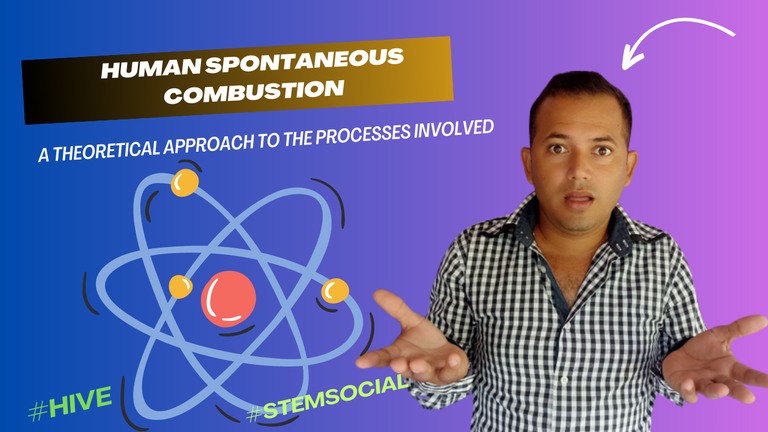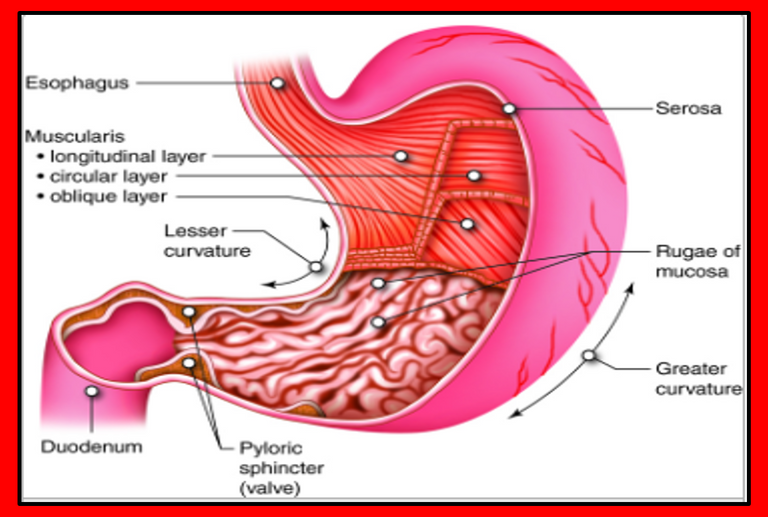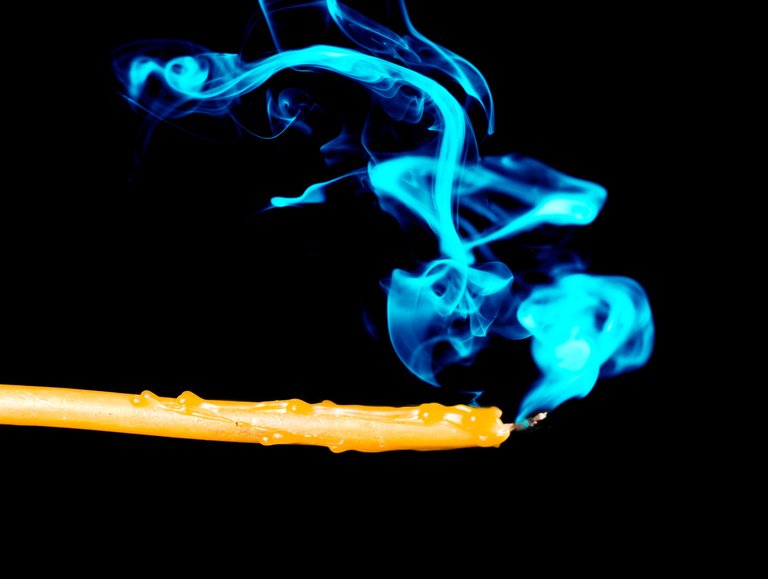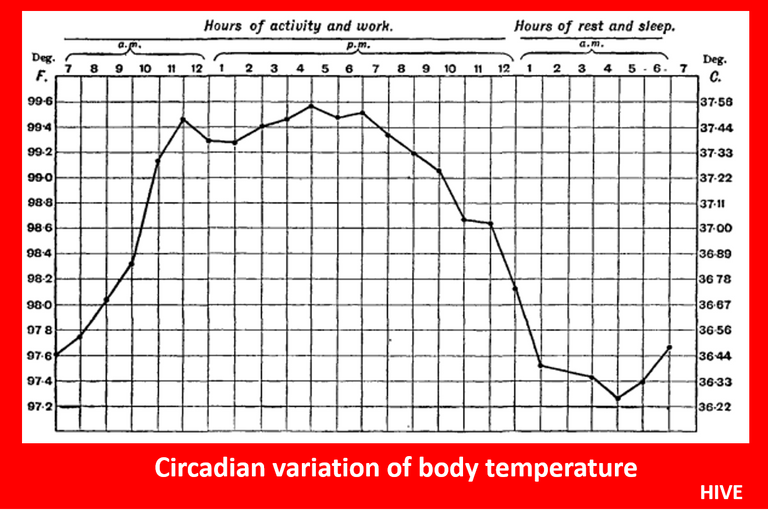HUMAN SPONTANEOUS COMBUSTION, A THEORETICAL APPROACH TO THE PROCESSES INVOLVED
The scientific subject throughout history has allowed us to understand the functioning of the observed phenomena, since ancient times, we have been fascinated by knowing how matter has been organized and structured, and from these discoveries we have been able to provide a great utility to the different elements that we can identify in our environment.

In this sense, history shows us that man has placed great emphasis on understanding what he does not know, which has allowed us to advance towards the great advances we know today, however, when we think that there is nothing to discover, there are still signs and behaviors that have led science to reinvent itself in order to deal with the unknown.
Based on the above, there is currently evidence of a little-studied phenomenon of which there is still no absolute certainty, in relation to what really happens at the biochemical level with the human body, when the development of a human spontaneous combustion.
You may be wondering How does the phenomenon occur? well, let me tell you that beyond our scientific advances, the phenomenon of human combustion continues to present itself as an enigma that has attracted mankind for centuries, it is a mysterious and debated phenomenon in which a human body burns in the absence of an external heat source, no doubt, it is a fascinating fact from which have emerged a variety of stories and legends describing the strange event.
However, its scientific explanation is still vague since no consensus has been established within science to justify the phenomenon, which is why through this material we will address various theories and possible chemical reactions that have been proposed to understand this seemingly impossible phenomenon.
Therefore, and in order to contextualize the scenario we will be dealing with, we will rely on audiovisual material shared by the Discovery Channel team on its YouTube channel and from there, we will describe some theories under discussion.
Audiovisual material extracted from: Science Channel

LET'S DISCUSS SOME CHEMICAL THEORIES THAT CLAIM TO JUSTIFY THE PROCESS

As is well known in the scientific world, to be validated hypotheses must be tested, in this sense, when analyzing the context of the phenomenon under study, we note that this process has not been achieved, so we will make a hypothetical management of what could be happening and for this, we will focus on various processes related to metabolism and biochemistry present in living beings.
Principle 1: Development of human spontaneous combustion due to the accumulation of flammable gases:
This has been one of the theories that has gained strength in recent times. It suggests that as a result of the biochemical processes developed in the human body, an imbalance can be generated that causes the accumulation of flammable gases such as methane in the digestive tract, which can be released through belching or flatulence and become a highly flammable component.
Therefore, when the equilibrium that maintains these substances in normal conditions is broken due to metabolic problems, we could be in the presence of overaccumulation of the same, reaching concentrations high enough to be flammable, hence a small ignition point or internal spark generated by biochemical processes would be enough to start a chain reaction of combustion.
If we try to understand the process at a chemical level, we could be in the presence of reactions such as the one shared below, where we observe that methane oxidation is highly exothermic, which allows us to infer that it releases a large amount of heat and energy when it occurs.

So, under normal conditions, this reaction is controlled at the level of the digestive tract, producing useful energy for the body. However, if there is a significant accumulation of methane gas in the body and a source of ignition, this reaction could trigger a sudden and uncontrolled release of heat, contributing to spontaneous combustion.

Image courtesy of: Cenveo, CC BY 3.0 United States via OLI-CMU
Principle 2: Development of human spontaneous combustion by means of the wick effect.
This has been another process that has been used to explain and justify the phenomenon of human spontaneous combustion, essentially based on the principle that humans are constantly immersed in absorbent materials, referring to our hair and the clothes we wear on a daily basis.
So these materials have the potential to behave as a wick when impregnated with flammable substances that have been produced by our own body system, among which are sweat, body lipid components and in many cases alcohol as a residue of metabolic processes, so that these materials have the necessary properties to act as conductors of fire carrying the ignition from an external source to the interior of the body.
In this sense, the wick effect theory assumes that if the absorbent substances that function as a wick are sufficiently impregnated with flammable material and come into contact with a heat source, they could act as a catalyst for the combustion of the body, remember that catalysts accelerate chemical reactions.
Therefore, if we want to approach the chemical process involved through chemical reactions, we can note that there is no specific reaction that supports this theory, on the other hand, we are in the presence of a process of heat and energy transfer from an external source, such as a flame or spark that advances through the absorbent wick and consequently into the surrounding body tissues, which generates a sufficiently high increase in local temperature, capable of igniting flammable materials in the body.

Image courtesy of: pxfuel
Principle 3: Development of spontaneous human combustion from internal chemical reactions.
This is one of the principles that has generated fewer arguments to explain the process of spontaneous combustion, and that it is based on the fact that there is an accelerated decontrol of the reactions and biochemical processes of our metabolic system, which would originate chemical reactions with a high level of enthalpy that could generate enough heat to trigger internal combustion.
The theory takes as an example, the processes of lipid oxidation, discussed in the previous section, where, being large carbon compounds, they are capable of generating heat as a by-product, so that if the system loses control over these reactions, the oxidation would become uncontrollable and the temperature of the system would rise drastically, generating the possibility of igniting the surrounding tissues.
However, from my perspective, this starting point is questionable since we certainly know that the human body is a highly regulated system when it comes to sudden temperature changes, which does not allow us to infer that it is unlikely that the extreme conditions of internal heat are generated for the process to develop.

Image courtesy of: RHorning
As we have been able to notice, there are several theories that have been proposed and that in a certain way we explain in this material, but we must be clear that internal combustion is still presented as a controversial and largely unproven phenomenon. Undoubtedly, the scarce scientific evidence, together with the strange events recorded around the phenomenon, has generated great skepticism about it for the scientific community.
Everything starts from the fact that the extremely regulated nature of our body, which does not allow the possibility of establishing extreme conditions for human spontaneous combustion to occur, besides, there is little forensic evidence that allows further emphasis on the process.

BIOCHEMICAL SCENARIOS PRESENT IN HUMAN SPONTANEOUS COMBUSTION

With the approach of the theories presented in the previous sections, in a certain way we introduced some biochemical principles that try to justify the phenomenon of human combustion, among these we could notice that the internal reactions are the starting point for the phenomenon to occur. So that scientists have focused their attention on the lipid oxidation, Let us remember that these substances involve both fats and oils, being fundamental compounds at the cellular level with great energetic contributions, and we must also be clear that the oxidation of these substances is a normal process that is highly regulated, as we have mentioned.
Likewise, we can describe the possibility involving the formation of acetylene, remember that this is a highly flammable compound and is the result of abnormal biochemical and metabolic processes. It is generated as a by-product of imbalances in our diet or from enzymatic complications, so that a high concentration of this substance can trigger a chain reaction of combustion.
Another factor or scenario to be taken into consideration is the decomposition of alcohols and ketones, compounds that can be flammable when the concentrations are elevated within the system, as a result of an abnormal decomposition of the same, which would cause a high heat of reaction and consequently a source of internal ignition that would give rise to spontaneous combustion.
Again, we must remember that we are in the presence of speculations since the processes mentioned here do not yet allow us to fully verify the functioning of human spontaneous combustion.

FINAL CONSIDERATIONS

Although we do not know with certainty what happens with human spontaneous combustion, it is still a phenomenon that awakens our attention and the scenarios described in the paper provide us with interesting ideas about possible conditions that must prevail for the phenomenon in question to take place, however, we still need more scientific evidence that allows us to fully verify what really happens around the human body when this enigmatic process takes place.

BIBLIOGRAPHIES CONSULTED

[1] Nickell, J. (2006). Investigating the Unexplained: Spontaneous Human Combustion. Skeptical Inquirer, 30(5), 43-46.
[2] Gresham, C. A., & Stahl, G. L. (2002). Spontaneous human combustion: A possible mechanism. Journal of Forensic Sciences, 47(3), 542-551.
[3] Milroy, C. M. (1995). The Pathology of Spontaneous Combustion. The American Journal of Forensic Medicine and Pathology, 16(2), 153-157.
[4] Thaler, M., & Gottardi, W. (1993). Spontaneous human combustion: A possible role of nitrous fumes in its etiology. A contribution to the carbon monoxide controversy. The American Journal of Forensic Medicine and Pathology, 14(3), 191-198.

OF INTEREST


0
0
0.000
Thanks for your contribution to the STEMsocial community. Feel free to join us on discord to get to know the rest of us!
Please consider delegating to the @stemsocial account (85% of the curation rewards are returned).
You may also include @stemsocial as a beneficiary of the rewards of this post to get a stronger support.
Thanks for the contribution, dear team.
Interesting. But with 8 billion people alive, and so many more dead, and no one ever witnessing someone else spontaneously catch on fire, I think it's doubtful that this ever really occurs.
Greetings friend you are right, that is why I make an approach on hypothetical facts that have not been verifiable and this happens because of the lack of information to validate such events.